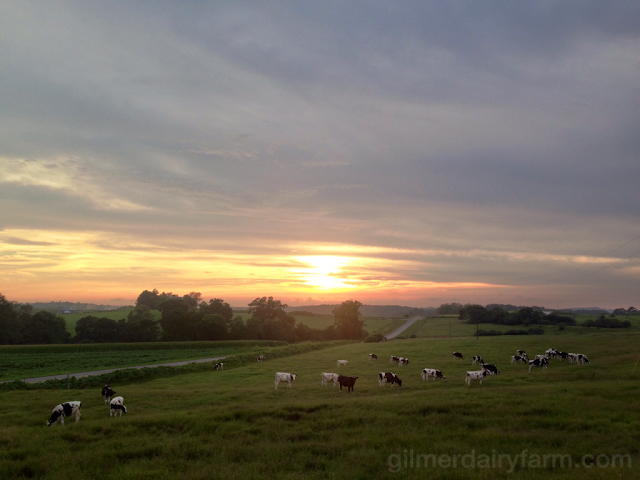I've noticed as I've scrolled through Twitter today that many people are going beyond their usual December 31 "year in review" posts to recap the whole last decade. I guess I might as well play along, too, so in a few broad strokes I'll try to paint you a picture of what life has been like on the farm over the past ten years.
 |
| Me at the start of the decade versus me at the end of the decade. I'm ten years older and wiser...and about twenty pounds heavier. |
But it's not all been doom and gloom on the dairy these past ten years. Yes, some years the milk price was good and more years it wasn't. Same goes for our forage crops...some years the weather was kind, others it wasn't. And while we make plans for the weeks and months and years ahead, we can only live one day at a time. Thankfully, there have been a whole lot more good days than bad. For all the challenges we've faced, I've been able to lay my head down each night knowing that what we do is all worth it.
 |
| my father & my kids in our milking barn, Spring 2015 |
Switching the focus from the farm to farm life, it's been quite the eventful decade. My wife and I began it with a toddler and an infant and are ending it with a teenager and a preteen. It's been such a blessing watching our kids grow and develop! Both are excellent, gifted students and involved in all kinds of activities. There's no telling how many hours we've spent at ball fields and in gyms over the past ten years, and now we're adding music to the mix. Our son may have found his niche playing trombone in the high school's band, and our daughter has recently taken to playing the piano like a duck to water. What we're most proud of though is that they both have placed their faith in Christ and are growing spiritually just as they are in every other aspect of their lives.
And since I mentioned faith, one of the positive turning points for our family this past decade was the decision to step away from the church I grew up in and be open to God leading us somewhere new. It only took a couple of months to find that place. I've said before that there's a difference between going to church and having a church family, and that's exactly what we've found at Fellowship Baptist over the past five years.
Looking ahead to 2020, better milk prices should lead to a good year on the farm as long as the weather cooperates and we do good with our forage crops. I have no idea where we'll stand by the time 2030 rolls around, though. Our oldest kid will be an adult and our youngest should be halfway through college. The last dairy cow will have long since left our farm by that time as we will have already completely transitioned over to beef production. The biggest question (worry) I have is whether or not our beef herd will generate enough income for both my parents and my family. If so, great! If not, I reckon I'll be in my 40s looking for an off-the-farm job for the first time in my life. Come whatever may, there's not much I can do but take things as they come day by day, trust in the Lord, and do the best I can to serve my family, church, and community.
 |
| My parents, wife, children, and I on the farm in 2010 and at my deacon ordination service in 2019. |


























